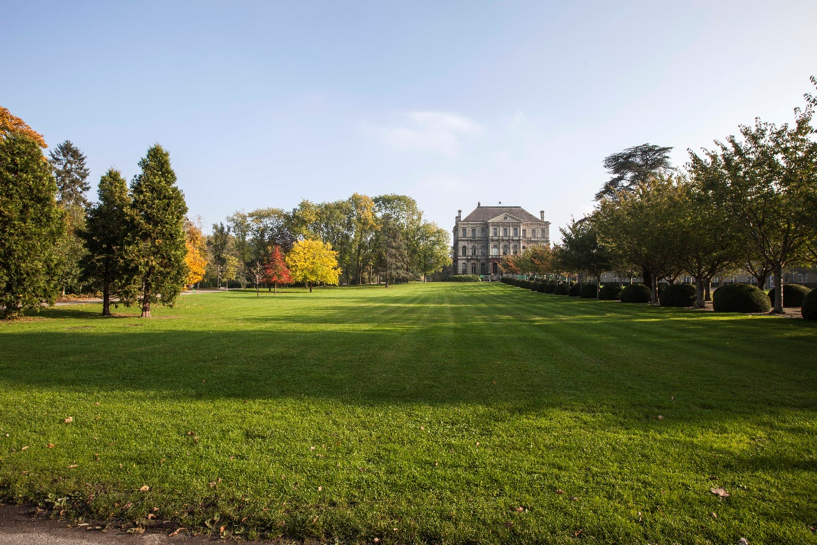A BRIEF EXPLANATION
De Lovie vzw is a social organisation that provides support to young people and adults with a mental disability or other impairment. People with additional needs due to autism spectrum disorder, psychiatric vulnerability, medical or physical problems, dementia, etc. can also contact them.
A number of De Lovie vzw’s sites are historically valuable, one of which is the castle estate with protected park elements in Poperinge. Out of respect for cultural heritage, De Lovie seeks to restore these buildings and meaningfully repurpose them. Supporting people with disabilities and caring for heritage go hand in hand, so to speak.
The castle dates back to 1856 and is built in neo-classical style. The 63-hectare castle park was laid out according to the concept of the English landscape garden. It is a protected townscape and several park elements are protected as monuments: hunter’s cave, memorial chapel, gazebo on Drogenbroodberg, garden pavilion, Chinese Gate, ice cellar, field hospital barracks, castle.
De Lovie vzw wants to gradually develop the park as an ‘open heritage’ site, in which the protected monuments, the natural context, and the rich experiential history of the estate together with the interaction between the residents of the park and the wider public are central…

